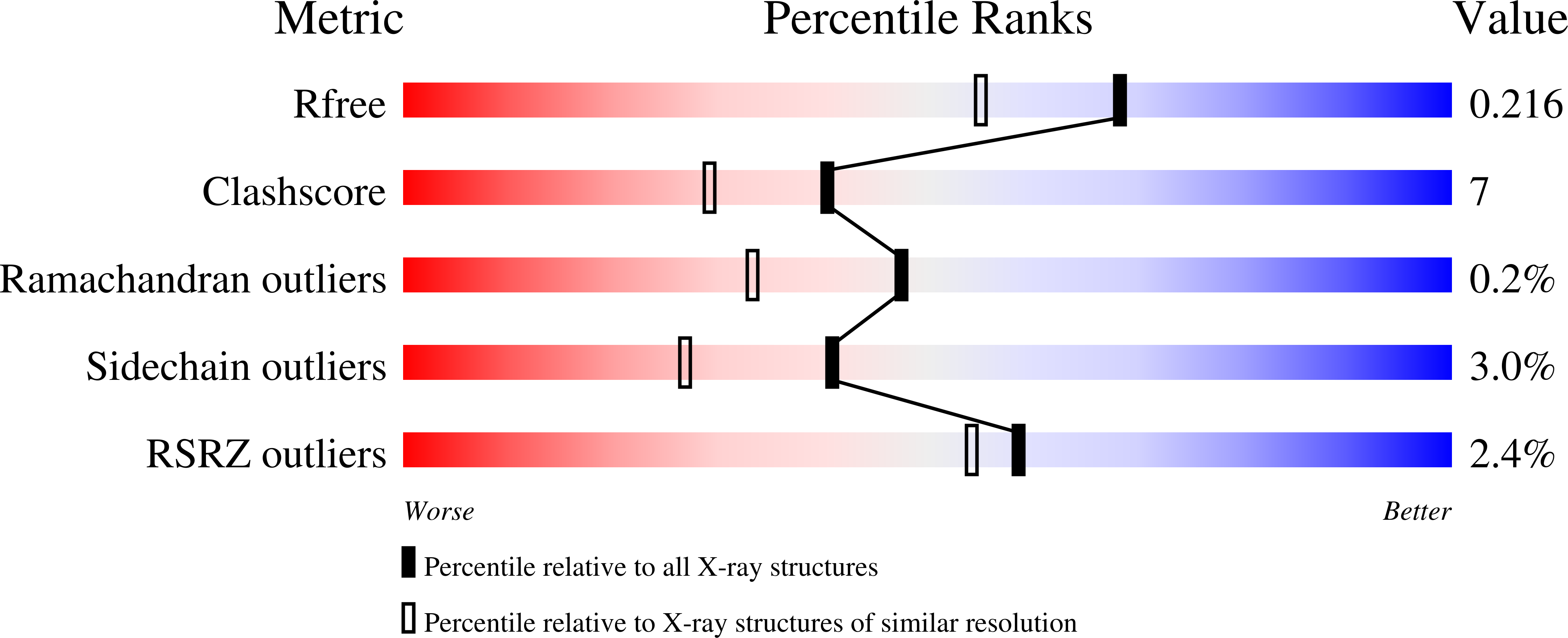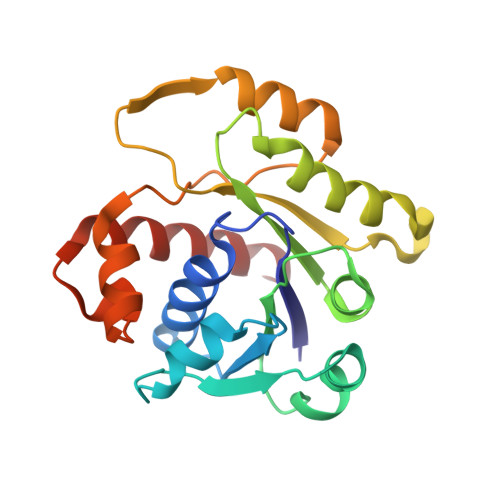Structural Mechanism of ATP-induced Polymerization of the Partition Factor ParF: IMPLICATIONS FOR DNA SEGREGATION.
Schumacher, M.A., Ye, Q., Barge, M.T., Zampini, M., Barilla, D., Hayes, F.(2012) J Biol Chem 287: 26146-26154
- PubMed: 22674577
- DOI: https://doi.org/10.1074/jbc.M112.373696
- Primary Citation of Related Structures:
4DZZ, 4E03, 4E07, 4E09 - PubMed Abstract:
Segregation of the bacterial multidrug resistance plasmid TP228 requires the centromere-binding protein ParG, the parH centromere, and the Walker box ATPase ParF. The cycling of ParF between ADP- and ATP-bound states drives TP228 partition; ATP binding stimulates ParF polymerization, which is essential for segregation, whereas ADP binding antagonizes polymerization and inhibits DNA partition. The molecular mechanism involved in this adenine nucleotide switch is unclear. Moreover, it is unknown how any Walker box protein polymerizes in an ATP-dependent manner. Here, we describe multiple ParF structures in ADP- and phosphomethylphosphonic acid adenylate ester (AMPPCP)-bound states. ParF-ADP is monomeric but dimerizes when complexed with AMPPCP. Strikingly, in ParF-AMPPCP structures, the dimers interact to create dimer-of-dimer "units" that generate a specific linear filament. Mutation of interface residues prevents both polymerization and DNA segregation in vivo. Thus, these data provide insight into a unique mechanism by which a Walker box protein forms polymers that involves the generation of ATP-induced dimer-of-dimer building blocks.
Organizational Affiliation:
Department of Biochemistry, Duke University School of Medicine, Durham, North Carolina 27710, USA. maria.schumacher@duke.edu
















